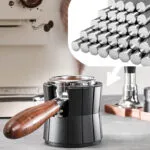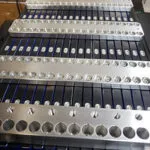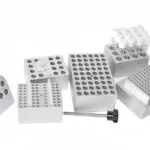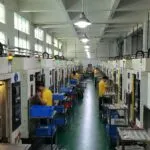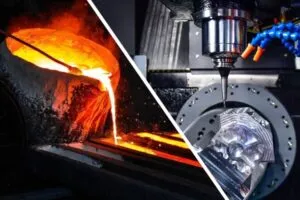Welcome to the ultimate guide on stainless steel machining! We’ll dive into the details of what stainless steel machining is. It’s a process that uses machinable stainless steel, known for its strong resistance to corrosion and durability.
This material is a top choice in many fields like automotive, aerospace, medical, and culinary. It’s used because of its ability to withstand harsh conditions.
If you want to learn about CNC machining, find reliable services, or know more about stainless steel turned parts, you’re in the right place. This guide will give you the knowledge you need. Let’s explore the key practices and things to consider in stainless steel machining together.
What is Stainless Steel?
Stainless steel is a mix of iron and at least 10.5% chromium. This mix makes it corrosion-resistant, which is why it’s used in many fields. The chromium creates a protective layer that stops rust and tarnish, helping it last longer.
Other elements like nickel, molybdenum, and manganese also play a part. They improve its strength, flexibility, and ability to handle high temperatures and chemicals. Knowing what stainless steel is means understanding these elements and their effects on the alloy.
There are different types of stainless steel, each for specific uses. You have austenitic, ferritic, and martensitic steel, among others. Each type has unique qualities that fit various needs, from kitchen tools to industrial gear. This variety helps designers pick the right alloy for their projects, ensuring both function and beauty.

Can Stainless Steel Be Machined?
Many engineers and machinists often ask, *can stainless steel be machined?* The answer is a resounding yes. Machining stainless steel is entirely feasible, although its effectiveness largely hinges on the specific grade and alloy being used. Different grades possess varying levels of hardness and work-hardening rates, which directly influence overall machinability.
In general, austenitic stainless steels, such as 304 and 316, demonstrate relatively good stainless steel machinability compared to ferritic and martensitic versions. This variation means that processes such as turning, drilling, and milling require specific tools and conditions tailored to each stainless steel type.
For successful machining practices, attention to detail is crucial. Proper tool selection is vital, with carbide and high-speed steel tools often recommended for their durability. Additionally, machining parameters, including speed and feed rates, should be optimized to ensure efficient operations while minimizing tool wear and damage. By focusing on these aspects, one can enhance the likelihood of achieving optimal results when machining stainless steel.

Overall, understanding the nuances of stainless steel machinability allows for informed decisions in manufacturing applications, ultimately leading to more effective and cost-efficient outcomes.
Types of Stainless Steel
The world of stainless steel has many types, each with special features for different uses. Knowing about these types helps in making better choices in making and using products. Here, we dive into each type, looking at its key traits and where it’s often used.
Austenitic Stainless Steel
Austenitic stainless steel is the most common type. It’s known for being easy to shape and resistant to corrosion. It has lots of chromium and nickel, making it strong and tough. It’s great for kitchen tools, pipes, and car parts, where looks and function matter a lot.
Ferritic Stainless Steels
Ferritic stainless steels have good corrosion resistance and can be magnetic. They’re not as flexible as austenitic types but are a good mix of cost and quality. They’re used in cars, appliances, and buildings, where they offer strength and protection without needing to be very flexible.
Martensitic Stainless Steels
Martensitic stainless steels are very strong and can handle wear well. They have more carbon, which makes them tough. They’re often used for making knives, surgical tools, and other items that need to last, even if they’re not as good at fighting corrosion as some other types.
Duplex Stainless Steels
Duplex stainless steels mix austenitic and ferritic qualities. This mix gives them high strength and great corrosion resistance. They’re perfect for tough places like chemical plants and oil rigs. Their special mix lets them handle high pressure and heat, making them a solid choice for hard tasks.
Stainless Steel Machining Processes
Machining stainless steel involves several key steps. Each step is designed to achieve specific results. It’s important to know the material’s characteristics and the tools used.
Milling
Milling stainless steel uses rotary cutters to remove material. It’s great for making intricate shapes. Choosing the right cutting tools and speeds is key to avoid overheating and tool wear.
Turning
Turning stainless steel rotates the material against a stationary tool. It’s best for making cylindrical parts like shafts. Using the right feed rates and tool materials is crucial for precision and finish.
Drilling
Drilling stainless steel makes holes of different sizes and depths. The right drill bits and cooling methods improve hole quality. Proper feed rates prevent drill breakage, ensuring clean holes.
Threading
Threading stainless steel is vital for making screw threads. It’s used in fasteners and fittings. The right tools and techniques ensure a strong connection. Precise threading is key for the parts’ functionality.
Surface Finishes For Stainless Steel Machined Parts
Improving the look and protection of stainless steel parts involves different finishing methods. Each method has its own benefits and can be customized for various needs. High-quality finishes not only make parts look better but also last longer in different settings.
Polishing
Polishing stainless steel is a favorite for its smooth, mirror-like finish. It boosts the part’s look and fights corrosion by reducing where dirt can stick. Polished surfaces also reflect light well, making them great for places like food and drink industries or building designs.
Blasting and Pickling
Blasting and pickling are key steps to get stainless steel ready. Blasting uses abrasive materials to remove dirt and oxidation, improving quality. Pickling uses acid to clean and protect the metal, keeping it corrosion-free. These steps together make the surface better at resisting wear and corrosion.
Brushing
Brushing stainless steel gives a satin finish that looks good and works well. It uses a brush with abrasive materials to create lines on the surface, reducing glare. Brushed finishes are popular in places like kitchens and medical gear, where looks and safety matter.
Is Stainless Steel Difficult to Machine?
When we talk about how hard it is to machine stainless steel, we look at a few key points. The ease of machining depends on the type of stainless steel. Some types, like austenitic stainless steels, are easier to work with than others.
Machining stainless steel can be tough because of its strength and resistance to wear. When you machine the surface, it can get harder. This makes it hard to keep the right size and finish.
Another problem is tool wear. Cutting stainless steel can quickly wear down tools. This costs more money and causes delays. To fix this, you need to pick the right cutting speeds and tools. Special coolants can also help by keeping the tools from overheating.
Knowing about these issues helps machinists find ways to overcome them. By getting ready for these challenges, they can do better work and be more efficient.
| Challenge | Description | Solution |
|---|---|---|
| Work Hardening | Increased hardness after initial machining, affecting further processing. | Use appropriate cutting methods and speeds; avoid overheating. |
| Tool Wear | Rapid degradation of tools during machining operations. | Choose durable tools specifically designed for stainless steel. |
| Heat Management | Excessive heat can lead to poor finishes and tool failure. | Incorporate specialized coolants to reduce temperature and friction. |
Which Stainless Steels are Difficult to Machine?
Finding out which difficult to machine stainless steels is key for those in stainless steel machining. Some grades, like martensitic and high-carbon, are especially tough. Their hardness makes machining hard, as it causes the material to become even harder.
Martensitic stainless steels are very strong and hard. They can wear down tools fast. Choosing the right cutting tools and settings is crucial to manage this. High-carbon grades also make machining harder because they resist wear well.
To tackle the issues with challenging stainless steel grades, experts use advanced cutting methods. High-performance carbide tools help a lot. Adjusting how fast and how much you cut can also make things smoother, helping to overcome these materials’ challenges.
Here’s a table showing some of the toughest difficult to machine stainless steels and what makes them hard:
| Stainless Steel Grade | Hardness (HRC) | Work Hardening | Recommended Tooling |
|---|---|---|---|
| AISI 410 | 30-45 | Yes | Carbide Tools |
| AISI 440C | 55-60 | Yes | Coated Carbide Tools |
| AISI 420 | 40-50 | No | High-Speed Steel |
| AISI 630 | 30-40 | Yes | Carbide Tools |
Which is the Easiest Stainless Steel to Machine?
Austenitic stainless steels are the easiest to machine. Grades like 304 and 316 are popular because they are less resistant. This makes machining smoother and more efficient.
These steels are very ductile and have lower alloy contents. This makes them easier to machine. Grades like 304 and 316 are recommended for their corrosion resistance and durability.
Choosing 304 and 316 for your projects can lead to success. Using the easiest stainless steel to machine improves efficiency and component longevity. Remember, the right tools and techniques are also crucial for the best results.




